
They are very similar and both serve the purpose to filter out the same size of particles (0.1 to 0.3 microns) and be 95% effective in their filtration. N95 is the name for the masks in the US, K95 is what they are called in China.
Whether N95 or K95, the mask should fit tight on the face or it serves no purpose. If there is any gap or opening, they become ineffective for any filtration.
Always remember, N95/K95 masks protect the wearer from the environment, surgical masks protect the environment from the wearer.
Let’s get technical…so these masks are approved by the Chinese government, are they safe in the US?
Q: Can respirators approved under standards used in other countries, such as KN95, be used in the U.S. during the COVID-19 pandemic?
A: Yes, under an emergency use authorization. The U.S. Food and Drug Administration (FDA) is working diligently to mitigate any potential shortages in the supply chain and taking action to assure health care personnel on the front lines have sufficient supplies of respiratory protective devices. The FDA concluded, based on the totality of scientific evidence available, that certain imported respirators that are not National Institute for Occupational Safety and Health (NIOSH)-approved are appropriate to protect the public health or safety.

Practice Fusion, a vendor of electronic health records software, will pay $145 million to resolve criminal and civil investigations, including a probe into a scheme to increase opioid prescriptions, the Justice Department said Monday.
The DOJ said the case marks the first criminal action taken against an EHR vendor. Allscripts Healthcare Solutions, which purchased Practice Fusion in 2018, said the settlement involves conduct from before the acquisition.
Practice Fusion admitted to soliciting and receiving kickbacks of nearly $1 million from a "major opioid company" that the Justice Department didn't name in exchange for creating a clinical decision-support alert that would "cause doctors to prescribe more extended release opioids," according to the agency.
Practice Fusion reportedly advertised to the opioid company that it would receive a favorable return on investment because physicians would prescribe more opioids on seeing the CDS alert. That message was reportedly designed with input from the opioid company's marketing department.
"Practice Fusion's conduct is abhorrent," Christina E. Nolan, U.S. attorney for Vermont, said in a statement. "During the height of the opioid crisis, the company took a million-dollar kickback to allow an opioid company to inject itself in the sacred doctor-patient relationship so that it could peddle even more of its highly addictive and dangerous opioids."
Under the agreement, Practice Fusion will pay more than $26 million in criminal fines and roughly $118.6 million in civil settlements, including $113.4 million to the federal government and up to $5.2 million to states that opt to participate in separate state agreements.
The resolution also settles allegations that Practice Fusion received kickbacks from pharmaceutical companies in exchange for 13 other arrangements involving CDS alerts. Practice Fusion allegedly allowed the companies to participate in designing the alerts, including setting criteria to determine when a provider received an alert, some of which did not reflect accepted medical standards.
Practice Fusion was charged with two felony counts for violating the Anti-Kickback Statute and for conspiring with the opioid company to violate the Anti-Kickback Statute.
In addition to the kickback allegations, the civil settlement with the U.S. also resolves allegations that the company falsely obtained certification from the HHS' Office of the National Coordinator for Health Information Technology's health IT certification program for several versions of its EHR software. By allegedly misrepresenting those software capabilities, Practice Fusion led providers using its EHR to falsely attest to compliance with Medicare and Medicaid EHR incentive programs.
"As new technologies continue to develop and evolve, so too do new and innovative fraud schemes," Shimon R. Richmond, assistant inspector general for investigations at HHS, said in a statement. "We will continue to be vigilant in detecting and investigating these schemes."
Allscripts in August announced it had reached a tentative settlement with the DOJ. At the time, Allscripts President Rick Poulton said $145 million was "in line" with other settlements in the industry, and that investigations into Practice Fusion had "many similarities to investigations that have either been settled or remain active with many of our industry competitors."
In 2017, a separate EHR vendor—eClinicalWorks—and some of its employees were ordered to pay $155 million for allegedly falsely obtaining certification for its EHR software.
"We are pleased to complete the settlement of these legacy matters, which as disclosed last August involve conduct predating Allscripts' acquisition of Practice Fusion," said Brian Farley, Allscripts' general counsel and chief administrative officer, in an emailed statement Monday. "We remain committed to Practice Fusion and believe this matter should not overshadow the important and valuable work it is currently performing."
Allscripts said it has "further strengthened Practice Fusion's compliance program" since learning about the situation.
Under a deferred prosecution agreement with the Vermont U.S. Attorney's Office, Practice Fusion is required to cooperate with ongoing investigations into the kickback arrangement, overhaul its compliance efforts, and hire an independent oversight organization to review and approve any sponsored CDS alerts before they're implemented.
article by Jessica Kim Cohen
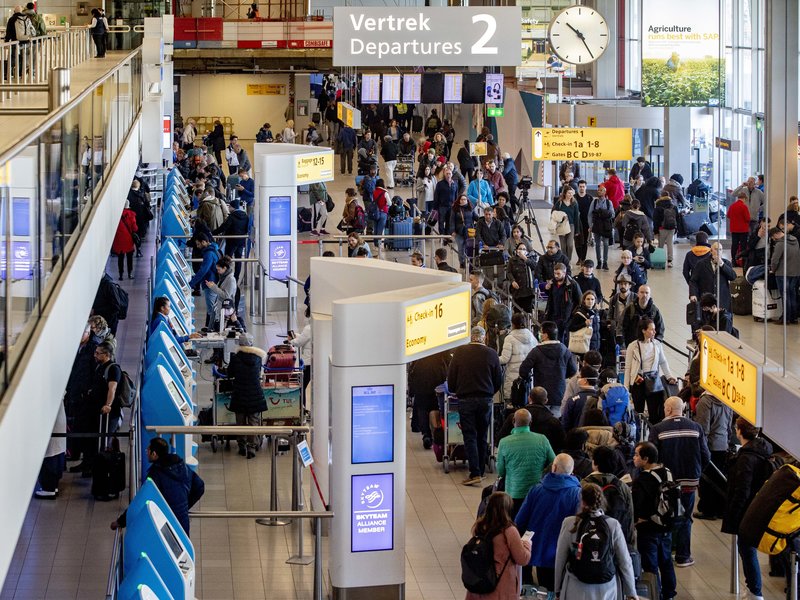
"The EU disapproves of the fact that the U.S. decision to impose a travel ban was taken unilaterally and without consultation," the heads of the European Union said Thursday, expressing their displeasure with President Trump's plan to block visitors from 26 European countries from entering the United States.
"The Coronavirus is a global crisis and requires cooperation," the EU leaders said.
European Council President Charles Michel and European Commission President Ursula von der Leyen spoke out Thursday, the morning after Trump abruptly announced his 30-day ban — rattling an already-shaken travel industry and creating new uncertainty among travelers in both the U.S. and Europe. The United Kingdom is exempt from the ban.
Complicating matters further, Trump left many people scrambling to learn the extent of the ban, which takes effect at midnight Friday. The White House later said the ban applies only to foreign nationals who have been in Europe's open-border Schengen Area.
Trump referred to "exemptions for Americans who have undergone appropriate screenings." Explaining that idea, the White House said U.S. citizens "will be directed to a limited number of airports where screening can take place."
The president's speech set off chaos at airports in Europe and created doubt for Americans who were bound to depart the U.S., many of whom worried that they might not be able to return home under either the travel ban or a new policy that might be enacted while they're abroad.
The U.S. move came hours after the World Health Organization classified the COVID-19 disease as a global pandemic.
Confusion about Trump's plan was reflected in tweets from two journalists who were on opposite sides of the Atlantic Ocean when he announced the ban.
"Sitting at Atlanta airport after abandoning my flight to France late last night," tweeted reporter Jennifer Berry Hawes of Charleston, S.C.'s The Post and Courier.
After being blindsided by news of the travel ban, Hawes and a colleague had only an hour to decide whether to fly to Europe as planned. The White House guidance on exemptions for Americans came out nearly two hours after Trump began his speech. Hawes and her co-worker opted to stay put rather than risk being stranded in Europe.
The scene was even more frantic at European airports.
"Bedlam at U.S.-bound airlines at [Charles De Gaulle Airport] in Paris early this a.m., as Americans pay as much as $20,000 for last-minute flights," reporter Mike McIntire of The New York Times said via Twitter.
McIntire added that he did not pay that large sum — but he said he got an urgent call from a relative in the U.S. after Trump announced the ban and bought an expensive ticket online as a result.
Trump also said the ban will proscribe "trade and cargo" from Europe, causing more confusion. The White House later clarified that the immigration law invoked by the president's ban "only applies to the movement of human beings, not goods or cargo."
In his address to the nation, the president said:
"To keep new cases from entering our shores, we will be suspending all travel from Europe to the United States for the next 30 days. The new rules will go into effect Friday at midnight. These restrictions will be adjusted subject to conditions on the ground.
"There will be exemptions for Americans who have undergone appropriate screenings, and these prohibitions will not only apply to the tremendous amount of trade and cargo but various other things as we get approval. Anything coming from Europe to the United States is what we are discussing."
Vice President Pence, who is leading the Trump administration's COVID-19 effort, defended Trump's handling of the prime-time address, saying, "I don't think there was confusion" created by the president's remarks.
In an appearance on CNN Thursday morning, Pence also mentioned that Americans flying home from Europe "will be funneled through 13 different airports" where they will be screened and then asked to self-quarantine. Pence did not name those airports.
The confusion played out as a broader debate continues over the ability of travel bans to contain deadly diseases and protect vulnerable populations from an outbreak.
The morning after Trump spoke, Lawrence Gostin, a public health law expert at Georgetown University, called the president's travel ban "incoherent" and said it would have no impact on the coronavirus outbreak in the United States. Gostin added that the policy goes against recommendations from the WHO and other international agencies.
"Travel from highly functioning health systems like Switzerland [are] banned, but not weak systems like Russia or Africa," Gostin said. "People are no safer in US than many places banned."
Trump's new policy follows weeks of criticisms about his administration's approach to the coronavirus — particularly its inability to get plentiful supplies of reliable testing kits into the hands of health professionals around the country. In the absence of enough testing, experts say, the U.S. has been unable to monitor or contain the virus.
In his speech, Trump also sought to blame the EU's member countries for failing to contain the virus, saying, "A large number of new clusters in the United States were seeded by travelers from Europe."
Before Trump's announcement, his administration had barred visitors from entering the U.S. if they had been in China or Iran in the past 14 days. Those policies, which took effect in February, don't apply to U.S. citizens or people who live in the United States.
Roughly 105 countries currently have some type of travel restriction in place because of the coronavirus, according to the IATA international travel site, which tracks such policies. Most of those limits are aimed at reducing ties to hot spots in China and Italy. And while some countries block passengers from France, Germany and Spain — all of which now have more than 2,000 coronavirus patients — the U.S. seems to be the first to prohibit visitors from virtually all of Europe.
"The president of the United States of America has announced an entry ban for most European countries," KLM Royal Dutch Airlines says on its webpage dedicated to the COVID-19 outbreak. Reflecting the uncertainty over Trump's policy, the airlines adds, "The impact of this measure is still unclear but is being investigated as we speak."
For now, the airline is one of many that are telling would-be passengers to be sure their contact information is up to date, so they can receive news of any changes.
Coronavirus symptoms and prevention
To prevent the coronavirus from spreading, the Centers for Disease Control and Prevention recommends washing hands with soap and water for at least 20 seconds or using a hand sanitizer if a sink isn't available. The World Health Organization says people should wear face masks only if they're sick or caring for someone who is.
"For most people, COVID-19 infection will cause mild illness; however, it can make some people very ill and, in some people, it can be fatal," the WHO says. "Older people, and those with pre-existing medical conditions (such as cardiovascular disease, chronic respiratory disease or diabetes) are at risk for severe disease."
The most common symptoms of COVID-19, according to a recent WHO report that draws on more than 70,000 cases in China, are the following: fever (in 88% of cases), dry cough (68%), fatigue (38%) and sputum/phlegm production (33%). Shortness of breath occurred in nearly 20% of cases; about 13% had a sore throat, and about the same percentage had a headache, the WHO said.
article by Bill Chapel

"The EU disapproves of the fact that the U.S. decision to impose a travel ban was taken unilaterally and without consultation," the heads of the European Union said Thursday, expressing their displeasure with President Trump's plan to block visitors from 26 European countries from entering the United States.
"The Coronavirus is a global crisis and requires cooperation," the EU leaders said.
European Council President Charles Michel and European Commission President Ursula von der Leyen spoke out Thursday, the morning after Trump abruptly announced his 30-day ban — rattling an already-shaken travel industry and creating new uncertainty among travelers in both the U.S. and Europe. The United Kingdom is exempt from the ban.
Complicating matters further, Trump left many people scrambling to learn the extent of the ban, which takes effect at midnight Friday. The White House later said the ban applies only to foreign nationals who have been in Europe's open-border Schengen Area.
Trump referred to "exemptions for Americans who have undergone appropriate screenings." Explaining that idea, the White House said U.S. citizens "will be directed to a limited number of airports where screening can take place."
The president's speech set off chaos at airports in Europe and created doubt for Americans who were bound to depart the U.S., many of whom worried that they might not be able to return home under either the travel ban or a new policy that might be enacted while they're abroad.
The U.S. move came hours after the World Health Organization classified the COVID-19 disease as a global pandemic.
Confusion about Trump's plan was reflected in tweets from two journalists who were on opposite sides of the Atlantic Ocean when he announced the ban.
"Sitting at Atlanta airport after abandoning my flight to France late last night," tweeted reporter Jennifer Berry Hawes of Charleston, S.C.'s The Post and Courier.
After being blindsided by news of the travel ban, Hawes and a colleague had only an hour to decide whether to fly to Europe as planned. The White House guidance on exemptions for Americans came out nearly two hours after Trump began his speech. Hawes and her co-worker opted to stay put rather than risk being stranded in Europe.
The scene was even more frantic at European airports.
"Bedlam at U.S.-bound airlines at [Charles De Gaulle Airport] in Paris early this a.m., as Americans pay as much as $20,000 for last-minute flights," reporter Mike McIntire of The New York Times said via Twitter.
McIntire added that he did not pay that large sum — but he said he got an urgent call from a relative in the U.S. after Trump announced the ban and bought an expensive ticket online as a result.
Trump also said the ban will proscribe "trade and cargo" from Europe, causing more confusion. The White House later clarified that the immigration law invoked by the president's ban "only applies to the movement of human beings, not goods or cargo."
In his address to the nation, the president said:
"To keep new cases from entering our shores, we will be suspending all travel from Europe to the United States for the next 30 days. The new rules will go into effect Friday at midnight. These restrictions will be adjusted subject to conditions on the ground.
"There will be exemptions for Americans who have undergone appropriate screenings, and these prohibitions will not only apply to the tremendous amount of trade and cargo but various other things as we get approval. Anything coming from Europe to the United States is what we are discussing."
Vice President Pence, who is leading the Trump administration's COVID-19 effort, defended Trump's handling of the prime-time address, saying, "I don't think there was confusion" created by the president's remarks.
In an appearance on CNN Thursday morning, Pence also mentioned that Americans flying home from Europe "will be funneled through 13 different airports" where they will be screened and then asked to self-quarantine. Pence did not name those airports.
The confusion played out as a broader debate continues over the ability of travel bans to contain deadly diseases and protect vulnerable populations from an outbreak.
The morning after Trump spoke, Lawrence Gostin, a public health law expert at Georgetown University, called the president's travel ban "incoherent" and said it would have no impact on the coronavirus outbreak in the United States. Gostin added that the policy goes against recommendations from the WHO and other international agencies.
"Travel from highly functioning health systems like Switzerland [are] banned, but not weak systems like Russia or Africa," Gostin said. "People are no safer in US than many places banned."
Trump's new policy follows weeks of criticisms about his administration's approach to the coronavirus — particularly its inability to get plentiful supplies of reliable testing kits into the hands of health professionals around the country. In the absence of enough testing, experts say, the U.S. has been unable to monitor or contain the virus.
In his speech, Trump also sought to blame the EU's member countries for failing to contain the virus, saying, "A large number of new clusters in the United States were seeded by travelers from Europe."
Before Trump's announcement, his administration had barred visitors from entering the U.S. if they had been in China or Iran in the past 14 days. Those policies, which took effect in February, don't apply to U.S. citizens or people who live in the United States.
Roughly 105 countries currently have some type of travel restriction in place because of the coronavirus, according to the IATA international travel site, which tracks such policies. Most of those limits are aimed at reducing ties to hot spots in China and Italy. And while some countries block passengers from France, Germany and Spain — all of which now have more than 2,000 coronavirus patients — the U.S. seems to be the first to prohibit visitors from virtually all of Europe.
"The president of the United States of America has announced an entry ban for most European countries," KLM Royal Dutch Airlines says on its webpage dedicated to the COVID-19 outbreak. Reflecting the uncertainty over Trump's policy, the airlines adds, "The impact of this measure is still unclear but is being investigated as we speak."
For now, the airline is one of many that are telling would-be passengers to be sure their contact information is up to date, so they can receive news of any changes.
Coronavirus symptoms and prevention
To prevent the coronavirus from spreading, the Centers for Disease Control and Prevention recommends washing hands with soap and water for at least 20 seconds or using a hand sanitizer if a sink isn't available. The World Health Organization says people should wear face masks only if they're sick or caring for someone who is.
"For most people, COVID-19 infection will cause mild illness; however, it can make some people very ill and, in some people, it can be fatal," the WHO says. "Older people, and those with pre-existing medical conditions (such as cardiovascular disease, chronic respiratory disease or diabetes) are at risk for severe disease."
The most common symptoms of COVID-19, according to a recent WHO report that draws on more than 70,000 cases in China, are the following: fever (in 88% of cases), dry cough (68%), fatigue (38%) and sputum/phlegm production (33%). Shortness of breath occurred in nearly 20% of cases; about 13% had a sore throat, and about the same percentage had a headache, the WHO said.
article by Bill Chapel

There is currently no vaccine to prevent coronavirus disease 2019 (COVID-19).
The best way to prevent illness is to avoid being exposed to this virus.
The virus is thought to spread mainly from person-to-person.
Between people who are in close contact with one another (within about 6 feet).
Through respiratory droplets produced when an infected person coughs or sneezes.
These droplets can land in the mouths or noses of people who are nearby or possibly be inhaled into the lungs.
Older adults and people who have severe underlying chronic medical conditions like heart or lung disease or diabetes seem to be at higher risk for developing more serious complications from COVID-19 illness. Please consult with your health care provider about additional steps you may be able to take to protect yourself.
Take steps to protect yourself
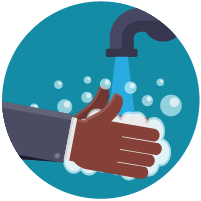
Clean your hands often
- Wash your hands often with soap and water for at least 20 seconds especially after you have been in a public place, or after blowing your nose, coughing, or sneezing.
- If soap and water are not readily available, use a hand sanitizer that contains at least 60% alcohol. Cover all surfaces of your hands and rub them together until they feel dry.
- Avoid touching your eyes, nose, and mouth with unwashed hands.
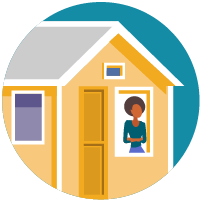
Avoid close contact
- Avoid close contact with people who are sick
- Put distance between yourself and other people if COVID-19 is spreading in your community. This is especially important for people who are at higher risk of getting very sick.
Take steps to protect others
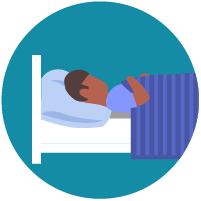
Stay home if you’re sick
- Stay home if you are sick, except to get medical care. Learn what to do if you are sick.
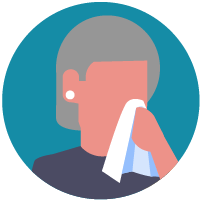
Cover coughs and sneezes
- Cover your mouth and nose with a tissue when you cough or sneeze or use the inside of your elbow.
- Throw used tissues in the trash.
- Immediately wash your hands with soap and water for at least 20 seconds. If soap and water are not readily available, clean your hands with a hand sanitizer that contains at least 60% alcohol.
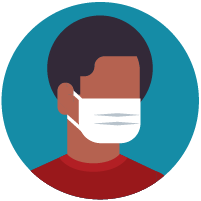
Wear a facemask if you are sick
- If you are sick: You should wear a facemask when you are around other people (e.g., sharing a room or vehicle) and before you enter a healthcare provider’s office. If you are not able to wear a facemask (for example, because it causes trouble breathing), then you should do your best to cover your coughs and sneezes, and people who are caring for you should wear a facemask if they enter your room. Learn what to do if you are sick.
- If you are NOT sick: You do not need to wear a facemask unless you are caring for someone who is sick (and they are not able to wear a facemask). Facemasks may be in short supply and they should be saved for caregivers.
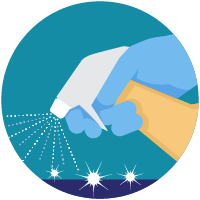
Clean and disinfect
- Clean AND disinfect frequently touched surfaces daily. This includes tables, doorknobs, light switches, countertops, handles, desks, phones, keyboards, toilets, faucets, and sinks.
- If surfaces are dirty, clean them: Use detergent or soap and water prior to disinfection.
To disinfect:
Most common EPA-registered household disinfectants will work. Use disinfectants appropriate for the surface.
Options include:
- Diluting your household bleach.
To make a bleach solution, mix:- 5 tablespoons (1/3rd cup) bleach per gallon of water
OR - 4 teaspoons bleach per quart of water
Follow manufacturer’s instructions for application and proper ventilation. Check to ensure the product is not past its expiration date. Never mix household bleach with ammonia or any other cleanser. Unexpired household bleach will be effective against coronaviruses when properly diluted.
- 5 tablespoons (1/3rd cup) bleach per gallon of water
- Alcohol solutions.
Ensure solution has at least 70% alcohol. - Other common EPA-registered household disinfectants.
Products with EPA-approved emerging viral pathogens [7 pages] claims are expected to be effective against COVID-19 based on data for harder to kill viruses. Follow the manufacturer’s instructions for all cleaning and disinfection products (e.g., concentration, application method and contact time, etc.).
article by CDC
